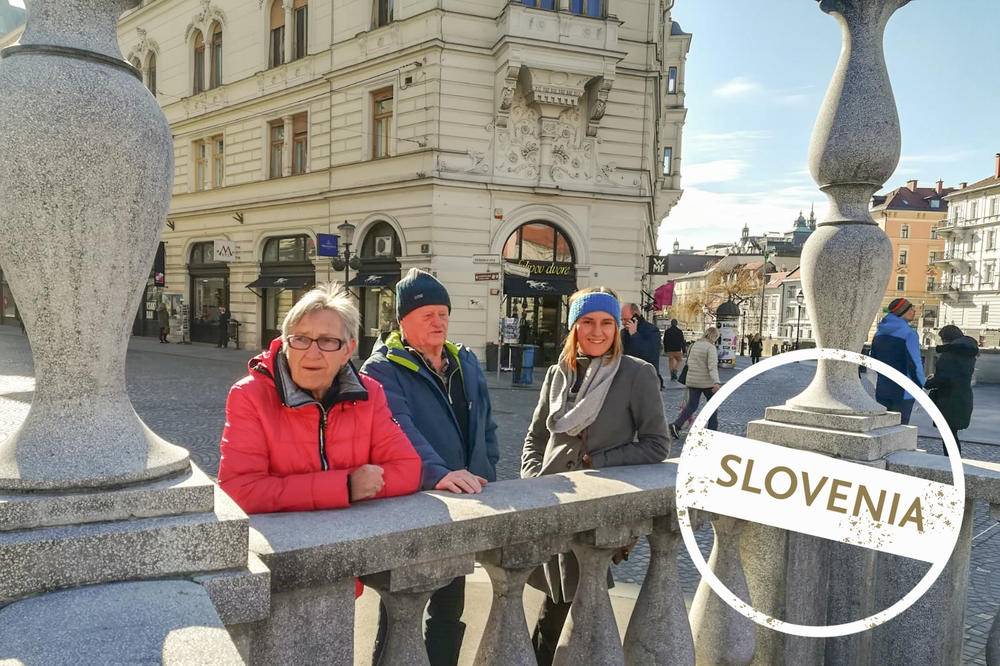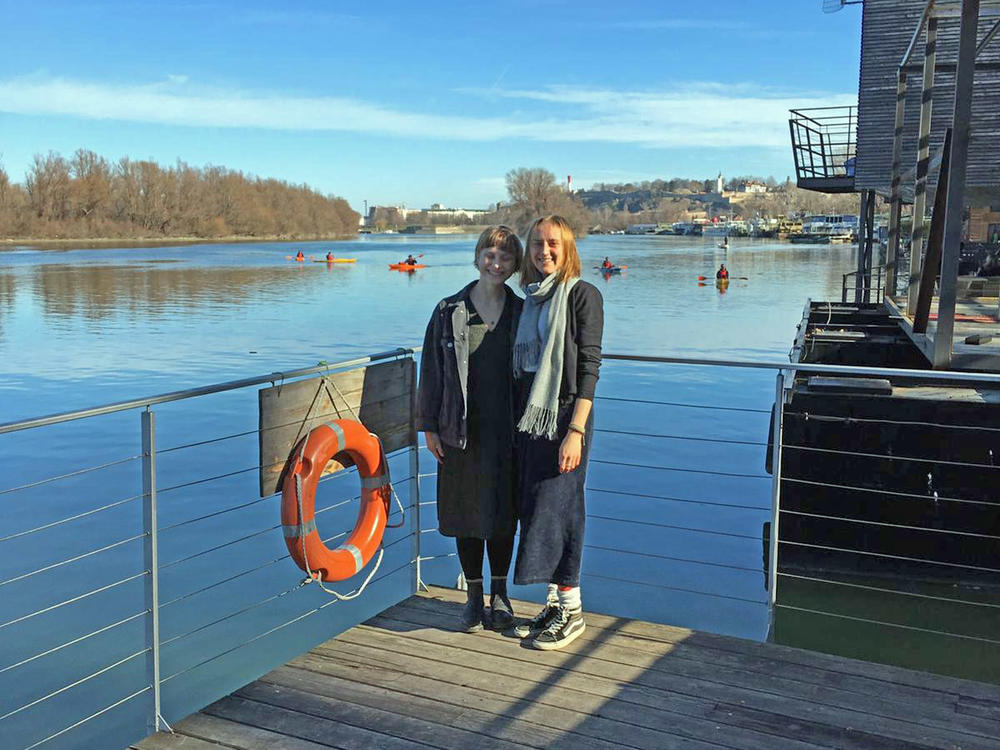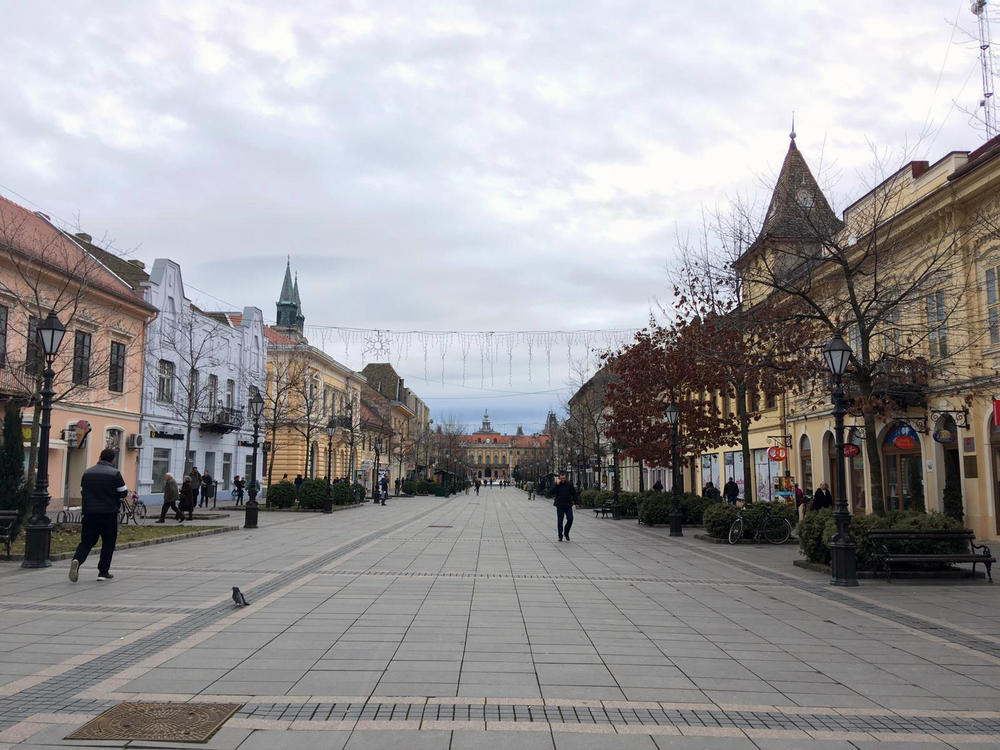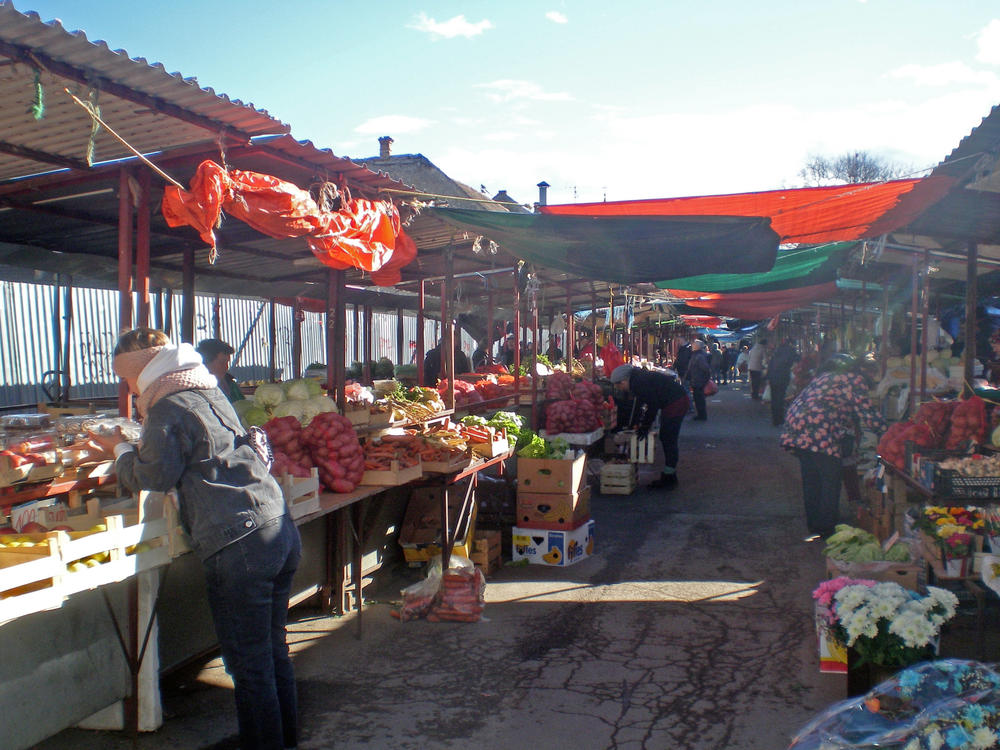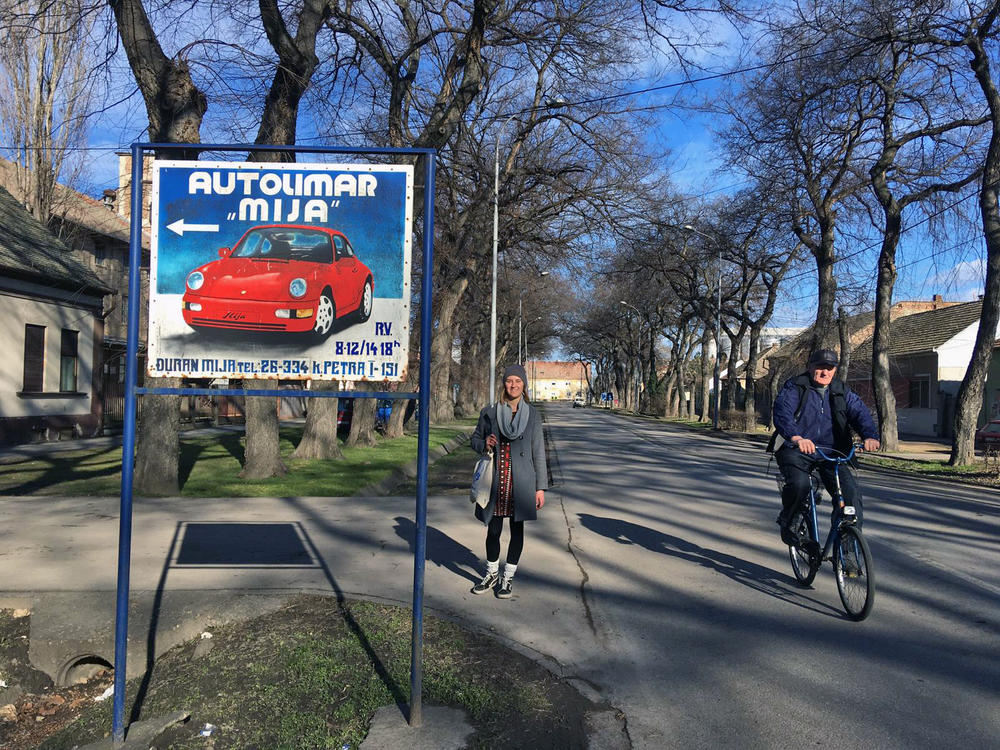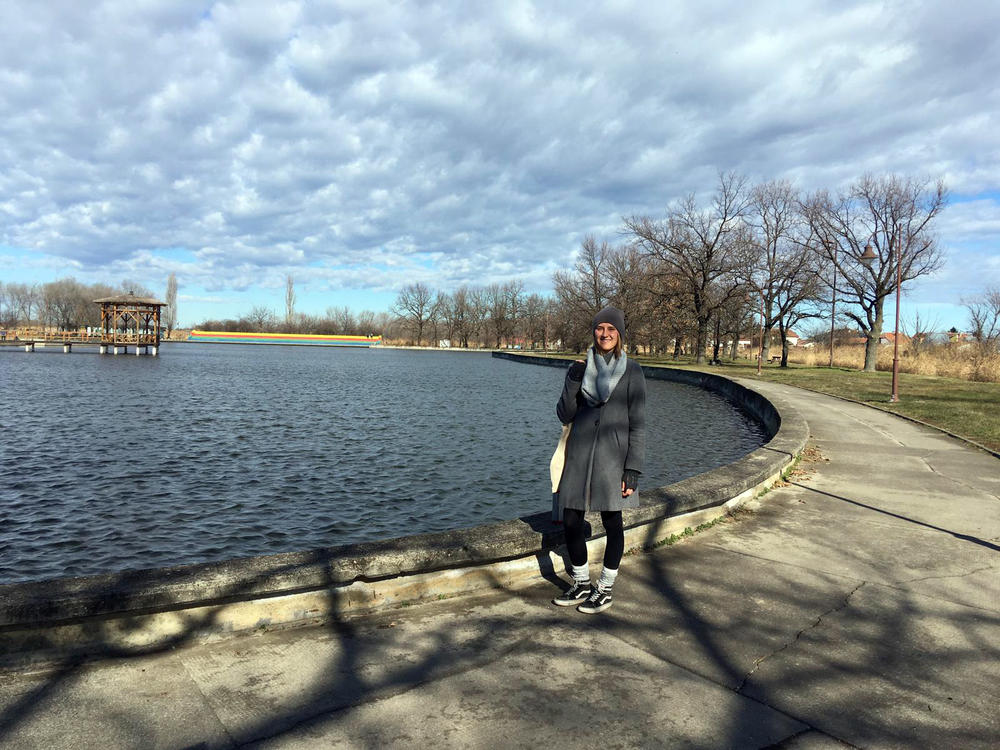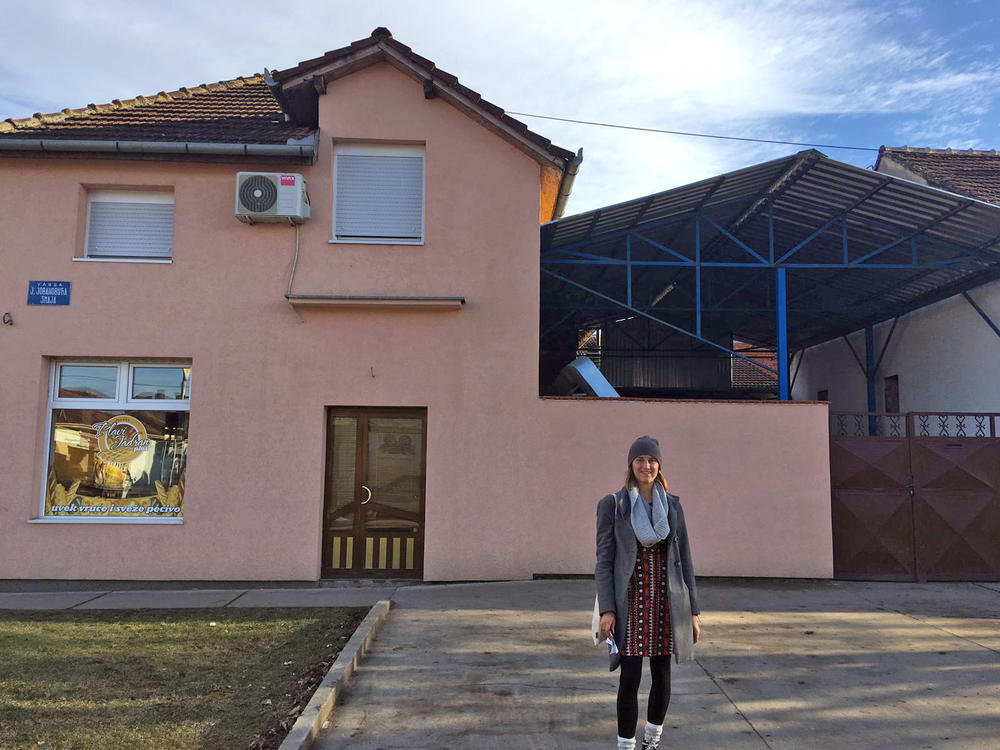Journey to My Roots
In her last letter from Ljubljana, Sonja Poschenrieder went in search of her roots: Family stories about her grandparents and great-grandparents led her to today’s Serbia.
Mar 17, 2020
At the end of her stay in Ljubljana, Sonja Poschenrieder was visited by her grandparents Resi and Rudi.
Image Credit: Personal collection
Resi, my maternal grandmother, came from Prigrevica, a former German village near Sombor, and Seppi, my paternal great-grandfather, originally came from the town of Kikinda, only 140 km from Prigrevica. Both places are in present-day Serbia. Grandma Resi and Great-Grandpa Seppi belonged to a German minority, the so-called Danube Swabians, who followed a call by the Habsburg Empress Maria Theresa in the 18th century, with the aim of settling the Wojwodina region. They were expelled from there at the end of World War II.
My Grandma Resi was three when she and her siblings and their mother had to flee their home for fear of retaliation by partisans. When she was six, the family reached a refugee camp in Sonthofen in the Allgäu, after spending some time in refugee camps in Serbia and on a farm in Austria. Finally they were put up on a farm in the Allgäu region. My grandmother remembers they had to walk the last 30 kilometers to get there.
Sonja Poschenrieder (right) and her fellow student Cassie went on a journey in the footsteps of her ancestors. Here they stopped at a hostel on the Danube in Belgrade.
Image Credit: Personal collection
Something similar happened to my Great-Grandfather Seppi from Kikinda. While he was stationed as a German soldier in Italy at the time of the evictions, his parents initially refused to leave the city. It was only after my Great-Grandfather Stefan was shot by partisans at the slaughterhouse in Kikinda in 1944 that his wife and children set off. This led them through Hungary and Vienna to Budweis in the Czech Republic and to Prague, then finally to Wangen in the Allgäu. I know about these incidents from the stories of my grandmother Helga, the daughter of Great-Grandfather Seppi, and from the diary of his cousin Marie Weiß, who wrote about their expulsion in her journal.
Today the city of Sombor is located in northeastern Serbia. Sonja Poschenrieder's grandma Resi comes from Prigrevica, a village in the area.
Image Credit: Personal collection
In 1978 my grandparents Resi and Rudi returned to Serbia to see what was left of their memories, and 42 years later I, their granddaughter, visited the homeland of my grandma and my great-grandfather. Flight and displacement are still present in Serbia today. I am traveling with Cassie, a German fellow student whom I met in Ljubljana.
On our first day of traveling, on the train from Ljubljana to Belgrade, we observed how a group of refugees got on the train at the Croatian border and was taken back to Belgrade. I have been particularly sensitive to this topic since I worked with refugees in Ljubljana during my internship at Slovenska Filantropija.
In Belgrade we slept on a houseboat on the Danube. In order to be allowed to cross the river when they were fleeing, my Grandma Resi's family had to trade all their jewelry.
Sonja Poschenrieder bought fresh vegetables and ajvar pepper sauce at a farmers' market in Sombor.
Image Credit: Personal collection
Then we went to Kikinda, where a 69-year-old Serbian couch surfer welcomed us. He recalled that, years after World War II, his mother had still mourned for a German friend who had to flee her home. We walked across the corso, or social promenade, where young people used to meet in my great-grandfather's day and visited the swimming pool where my grandmother Helga also went for a swim on her visit 55 years ago.
In Slovenia we always got along well with English, but communication in Serbia was much more difficult. Only once were we able to have a long conversation in German with a woman who sells Burek, a puff pastry with cheese, ham, potato, or apple filling.
Today the corso, or social promenade, in Kikinda is located near the Serbian border with Romania.
Image Credit: Personal collection
In Sombor we bought fresh vegetables and ajvar, a typical Yugoslav red bell pepper spread, at the farmers' market. Older women sat knitting socks at their stand and reminded me of my grandmother with their head scarves and bulbous noses. But apart from the memories I was told, there are hardly any signs from the past of my ancestors here, neither in cemeteries nor in the town square. At least the hostility seems to have vanished long ago: children learn German at school, and many people commute to Germany to earn much more than the local salary there. That was originally the burek seller's intention.
An outdoor swimming pool in Kikinda, the town Sonja Poschenrieder's great-grandfather came from.
Image Credit: Personal collection
Finding the streets and places that I know from my grandparents' stories is more difficult than I had expected it would be. I only have an old German city map, and today the streets have Serbian names and are partly written in Cyrillic script. In the place of the house where my great-grandfather grew up, there is now a bakery run by a friendly family from Kosovo. Another story of displacement.
On the way back to Slovenia we once again witnessed the strict border controls at the EU borders. Trucks were lined up along the highway, and people were walking back to Serbia along the guardrail. We had to leave the bus four times for passport controls before we got back to Slovenia. I can't forget the images of people with backpacks and sleeping bags under their arms. People who have to flee war again or who were driven away. People who are experiencing horrific fates again. In the same area as in World War II, and today there are again refugee camps that detainees are not allowed to leave. When will it stop?
A family from Kosovo now runs a bakery in the house where Sonja Poschenrieder's Uropa Seppi used to live.
Image Credit: Personal collection
At the end of my Erasmus stay, my grandparents, Grandma Resi and Grandpa Rudi, visited me in Ljubljana. I showed them the places that were important to me there: my apartment, the Slovenska Filantropija, where I did my internship, the restaurants that I visited. We talked about past times. That closed the circle of me searching for my ancestry, and my semester in Ljubljana ended.
Further Information
This is the last “Letter from …Ljubljana” from from Sonja Poschenrieder!. She is one of eleven students from Freie Universität reporting on their study abroad experiences. Here is an overview of all their letters. Sonja Poschenrieder’s other letters are here – and in German here.

